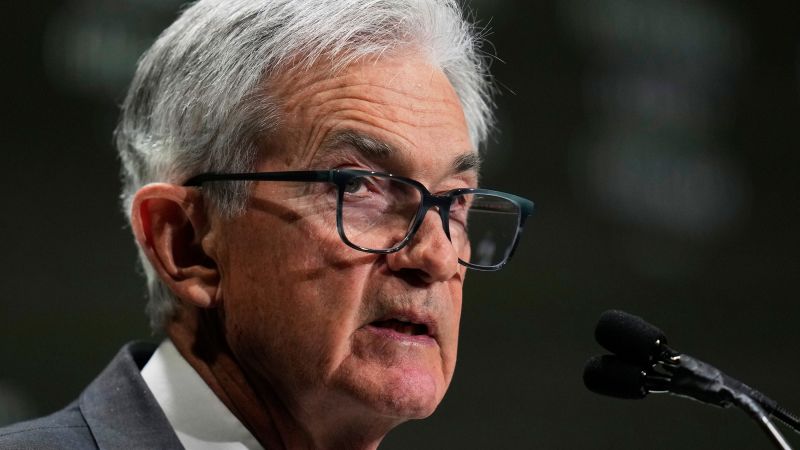In recent political developments, President Donald Trump has found himself at odds with the Federal Reserve Chair Jerome Powell, raising alarm among his closest advisers. These concerns emerged after Trump publicly criticized Powell, leading to discussions about the consequences of attempting to remove the Fed chair from his position. According to reports, several key advisors warned Trump that such an action might instigate significant market instability, akin to the ongoing disruptions caused by his trade war with China.
Following a tumultuous week characterized by market fluctuations, the president seemingly reassured investors during a press conference in the Oval Office on Tuesday. Displaying a tone of reconciliation, he proclaimed, “I have no intention to fire him,” leading to a collective sigh of relief from Wall Street stakeholders who had been growing wary of Trump’s aggressive stance towards the central banking system. This announcement provided a much-needed boost to the markets, which had reacted positively the previous day following Treasury Secretary Scott Bessent’s remarks suggesting a potential de-escalation in trade tensions.
On Wednesday, investor optimism surged, with Dow futures skyrocketing by an impressive 750 points or 1.9%. Alongside this, the S&P 500 futures increased by 2.6%, and Nasdaq followed suit with a remarkable 3% rise. The aftermath saw a renewed interest in U.S. Treasury bonds, causing a drastic decline in the benchmark 10-year yield, aligning at 4.3%, after prices surged.
The internal dynamics of the White House reflected considerable anxiety regarding Trump’s remarks on Powell. Key officials had begun to feel increasingly uneasy about the ongoing verbal attacks on the Fed chair and were particularly anxious about the potential for a drawn-out legal battle should the president choose to pursue his threats further. However, many within Trump’s advisory circle believed he would ultimately refrain from acting against Powell, having absorbed the warnings from his economic team, including Bessent, which had accumulated over several months.
Despite this, Trump’s heightened rhetoric throughout the previous week had rekindled uncertainty. Particularly alarming was his social media proclamation proclaiming that Powell’s “termination cannot come fast enough!” which he followed with insults labeling the Fed chair a “major loser” on Monday. Trump’s advocacy for interest rate cuts as a method to invigorate the economy, potentially as a counterbalance to the adverse effects of his extensive tariffs, has clashed with Powell’s commitment to a careful approach in monetary policy adjustments. The Fed chair has consistently expressed that any shifts in rates would follow thorough deliberation, and that there would be no hurried decisions prior to the next scheduled committee meeting in May.
Compounding the situation, White House Press Secretary Karoline Leavitt echoed Trump’s critiques of the Fed during a Tuesday briefing, insinuating that discrepancies in the Fed’s actions could be politically motivated, especially comparing the current scenario to potential rate cuts in the latter stages of the Biden administration. Despite such claims, Powell has vehemently denied any political considerations in the central bank’s decision-making processes.
Moreover, Trump’s chief economic adviser, Kevin Hassett, has pivoted in his stance concerning Powell’s job security, indicating that the White House was actively considering the possibility of Trump exerting influence over the Fed chair’s position. This shift marked a departure from Hassett’s earlier support for the independence of the Federal Reserve.
The ongoing discourse suggests that White House makeshift analyses regarding Powell’s potential termination could risk igniting both legal challenges and market volatility. Such outcomes have long been anticipated within White House strategy discussions, wherein Trump’s administration concluded that firing Powell could lead to negative repercussions. Ultimately, in a bid to quell market fears, Trump asserted in the Oval Office that the conjectured study into the legalities of dismissing Powell was unnecessary, prompting him to declare he “never did” have any intentions of removing Powell from his role as the Fed chair.
In conclusion, the interplay between Trump’s administration and the Federal Reserve highlights the complexities and intricacies of fiscal governance in times of economic uncertainty, where leadership decisions can evoke widespread ramifications across global financial markets.



